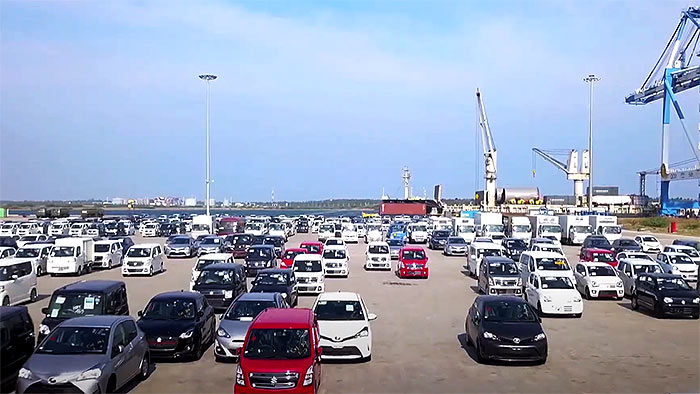Vehicle import taxes may rise up to 600%, warns VIASL

(Photo: YouTube)
The Vehicle Importers’ Association of Sri Lanka (VIASL) has raised concerns over a significant hike in vehicle import taxes, which could escalate to as high as 600% for certain vehicles.
Current taxes, approximately 300%, may increase to 400%, 500%, or even 600% due to the application of multiple layers of taxation. These taxes include a special import tax based on the vehicle’s value, luxury tax, excise duties, customs duties, and an 18% VAT, all compounded on the CIF (Cost, Insurance, and Freight) value of the vehicle.
VIASL President Prasad Manage clarified that the recent gazette notification primarily outlined excise duty percentages. However, the actual tax burden stems from several cumulative charges.
He highlighted that vehicles less than 10 years old now face excise duties of 200%–300%, with higher rates applied based on engine capacity, motor power (in kilowatts), and age.
Projected Increases in Vehicle Taxes:
- Wagon R: From Rs. 1.6 million to over Rs. 1.8 million.
- Toyota Vitz: From Rs. 2 million to approximately Rs. 2.4 million.
- Toyota Aqua, Corolla, Axio: From Rs. 5.7 million–6.6 million to amounts exceeding Rs. 6.6 million.
Despite these tax increases, the association noted that prices of vehicles already in the local market are expected to see only a slight rise.
VIASL urged potential buyers not to panic or make advance payments for vehicle reservations until the market stabilizes with the arrival of new imports.
Sri Lanka’s vehicle import restrictions, imposed in 2020 during a severe economic crisis, were lifted in September 2024. This was part of an IMF-backed recovery plan to stabilize the economy and foreign reserves.
The Cabinet approved phased vehicle imports under 304 Harmonized System (HS) codes, set to commence in February 2025. However, a gazette notification issued by President Anura Kumara Dissanayake on January 11, 2025, introduced new excise duty amendments for both fuel-powered and electric vehicles.
Key Changes in Excise Duties:
- 200%–300% excise duties are imposed on vehicles under 10 years old.
- Higher excise duties apply based on engine capacity, motor power, and manufacturing year.
While the government aims to generate revenue and manage imports sustainably, the steep tax increases could affect affordability for many buyers.
The association reiterated the need for transparency and urged the public to wait for further details before making decisions.

Latest Headlines in Sri Lanka
- Sri Lanka’s remittance inflows continue to grow in February 2025 March 10, 2025
- IGP Deshabandu Tennakoon seeks court order to block arrest March 10, 2025
- Chamal Rajapaksa to contest Local Government Elections under SLPP March 10, 2025
- Aloe Blacc arrives in Sri Lanka to explore investment opportunities March 10, 2025
- Sri Lanka’s Central Expressway cost soars due to corruption and delays by previous governments March 10, 2025


